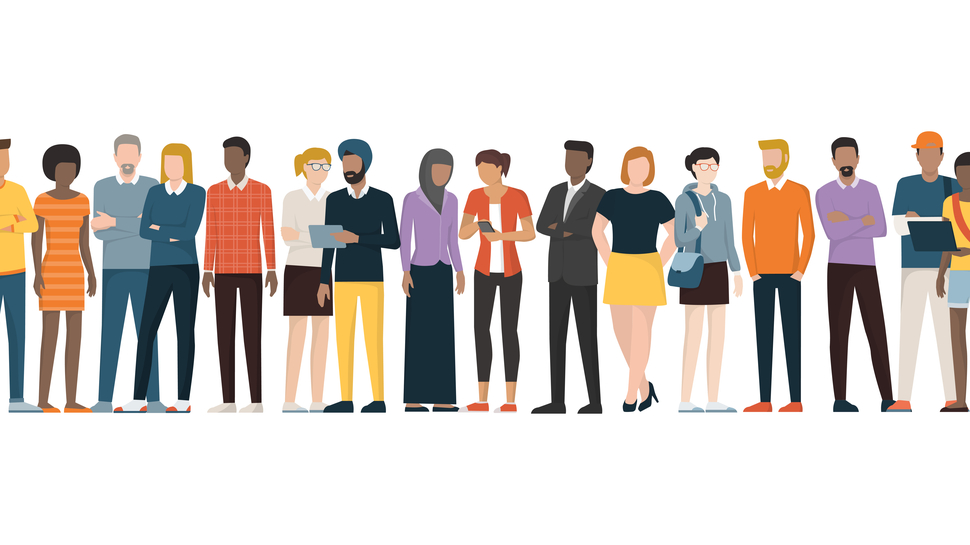Diverse workforces: why they’re more important now than ever
The importance of diverse workforces to fuel business growth

Innovation is not just a goal, it is a mindset through which forward-thinking businesses can improve people’s everyday lives and, if embraced correctly, create game-changing business results.
Many organizations have dedicated R&D teams focused on finding new ideas for improving products and services, but is this enough?
Embracing the Culture Add movement – onboarding and enabling talented people who have different points of view to the predominant culture – and expanding the innovation net wider than existing teams is a crucial way for businesses to accelerate their growth and innovation.
More voices for better ideas
In the past, businesses focused their efforts on trying to create teams where everyone fits into the company’s cultural mold. While this is still important when it comes to hiring employees with certain values, like a strong work ethic and collaborative capabilities, cultural fit can also emphasize conformity and develop the company into a homogeneous force. This creates the risk for blind spots and is detrimental to innovation and progress.
Alternatively, different backgrounds and life experiences provide a range of perspectives that are more likely to prevent groupthink, and encourage employees to feel comfortable sharing their ideas with each other. The more viewpoints organizations can bring together on how they can improve and innovate, the better.
Particularly in this time of rapid AI evolution, diversity among teams takes on a brand-new responsibility. Bias mitigation will be an integral part of responsibly deploying AI to ensure output is both accurate and equitable, and ultimately promotes inclusivity and community benefit. As such, a diverse workforce is not only a key factor for effective technology management, but will ensure the best possible results too.
United Kingdom Country Head at Cognizant.
Innovation from everyone, everywhere
Businesses that tap into every employee’s potential to be an innovator are future-proofing themselves. By expanding the scope of innovation and improvement across the entire organization – from HR teams to software development or marketing – they are making the most of their most valuable assets, their employees, as well as accessing an ocean of creative ideas.
Sign up to the TechRadar Pro newsletter to get all the top news, opinion, features and guidance your business needs to succeed!
After all, it is people, not machines, that power digital innovation and will continue to do so. Thriving in this digital era of promise and uncertainty means increasing the velocity of innovation, experimentation and collaboration. The main engine for this is not some magical technology — it’s talented people.
This is particularly true in the age of AI. Soon enough AI will enable us to find solutions to problems much faster than we are used to and could have anticipated. As a result, humans will spend more time problem finding, rather than problem solving, and this will become the most coveted skill. Successful problem finding will require a very diverse workforce, in terms of cognitive diversity but also in terms of education as well as social background. Non-STEM and humanities roles will become as important as technical ones for businesses looking to make the most of existing technologies.
Regardless of the advances in traditional and generative AI, there is no near-term prospect that it will replace the creativity, imagination and insightfulness that goes with human work.
Getting there in practice
It is easy to preach about the importance of developing an inclusive innovation culture, but it is more difficult to build it in practice. The first step is to put inclusive innovation at the center of the business and ensure time and energy is invested in its development.
Building spaces for creative collaboration and development can make an effective effort: these could be ideathons, hackathons or design thinking workshops, aimed at bringing people from different parts of the business together to bounce ideas off each other. These ideas can easily be turned into real improvements in the markets and solutions to clients’ problems. Even if the ideas don’t have an immediate application at the time of the ideas workshop, they can be stored in a central repository and made accessible for employees at all levels to leverage.
Finally, it’s crucial to acknowledge the creative minds behind the innovative ideas that fuel your business growth, through company-wide recognition and awards. This not only benefits those who have helped the business move forward but can also inspire others to participate.
Having a diverse and inclusive workforce is key for businesses aiming to innovate and grow. Creative thinking shouldn’t be limited to R&D or client-facing teams: all the great minds across a company should be involved in the process of developing the next big thing.
By tapping into all employees’ creative potential and welcoming all voices, companies are much more effective at generating new, innovative ideas and creating real change. When it comes to growth and innovation, the more, the merrier, the more diverse, the better.
We've featured the best collaboration apps.
This article was produced as part of TechRadarPro's Expert Insights channel where we feature the best and brightest minds in the technology industry today. The views expressed here are those of the author and are not necessarily those of TechRadarPro or Future plc. If you are interested in contributing find out more here: https://www.techradar.com/news/submit-your-story-to-techradar-pro
Rohit Gupta has been working at Cognizant for nearly 20 years and is now it's head of product and resources.